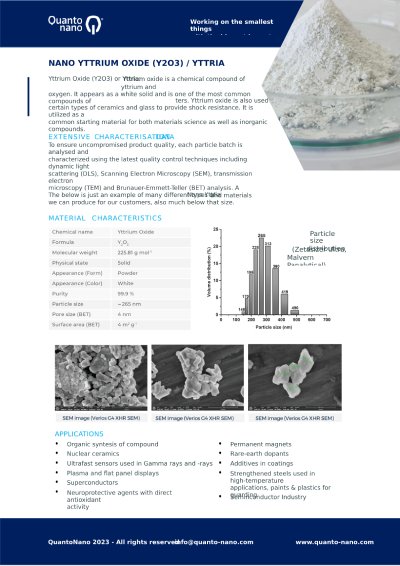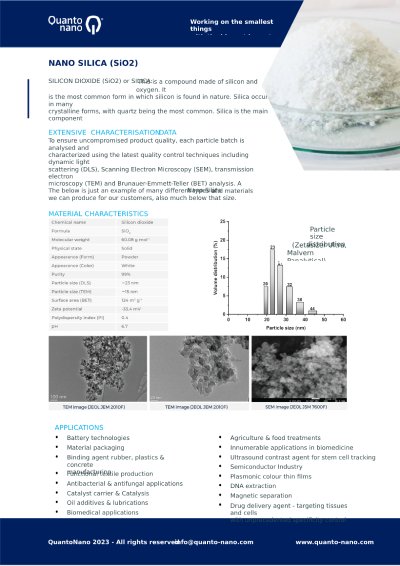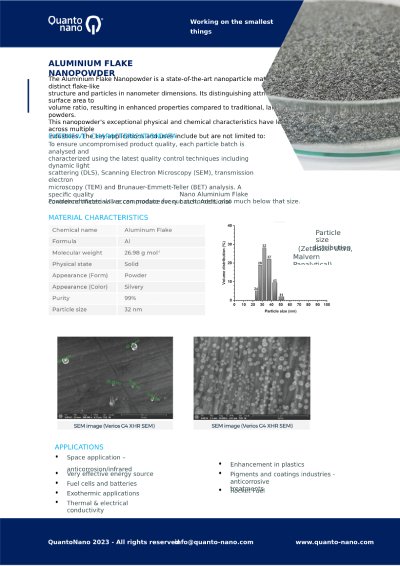Quanto Nano
Novel Membranes
Quanto Nano
Product Categories
Quanto Nano
Quanto Nano's Contributions to Novel Membrane Technologies
Welcome to Quanto Nano’s innovative world of membrane technology. Here, we specialize in pioneering the integration of nanotechnology and biological materials to revolutionize membrane applications in hydrogen fuel cells and beyond. Our focus is on developing sustainable, efficient, and high-performance membranes that align with the future of green energy. Through cutting-edge research and development, Quanto Nano is dedicated to enhancing membrane functionalities using eco-friendly and cost-effective solutions. Discover how our advanced membranes are setting new standards in the industry and contributing to a more sustainable future.
NanoEnhanced Membranes
- Oxygen-Rich Membranes
- Alkaline Membranes
- Proton Exchange Membranes (PEM)
- Anion Exchange Membranes (AEM)
Biological Composite Membranes
- Biological Composite Membranes
- Organic-Based Membranes with Nanoparticles
- Cellulose-Based Membranes
- Fungi-Derived Materials
- Chitin and Chitosan
- Algae-Derived Materials
- Protein-Based Membranes
Quanto Nano
Existing Membrane Types and Enhancements
- Nanosized Zirconia (ZrO2) and Yttrium (Y2O3) enhance oxygen ion conductivity.
- Yttrium-stabilized Zirconia (YSZ): Offers improved thermal stability and oxygen ion conductivity.
- Ceria (CeO2) Nanoparticles improve oxygen ion pathways and mechanical properties.
- Alumina (Al2O3) Nanoparticles for thermal stability and durability.
- Hydroxide Exchange Membranes (HEMs): Facilitate OH- ion transport, used in alkaline fuel cells.
- Nano Metal Oxides (e.g., ZnO, TiO2) increase hydroxide ion transport and strength.
- Nafion: Known for its high proton conductivity and stability.
- Polybenzimidazole (PBI): Operates at higher temperatures, offering improved CO2 tolerance.
- Graphene Oxide for enhanced mechanical and thermal properties.
- Silica (SiO2) Nanoparticles improve water management and durability.
-
- Quaternary Ammonium Membranes: Used for their stability and ion exchange capacity.
- Layered Double Hydroxides (LDHs) boost ion exchange and stability.
some of the nanomaterials that are currently topical in scientific research for AEMs:
Nanoparticle-Embedded AEMs Membranes:
- Silver Nanoparticles (AgNPs): Known for their antimicrobial properties, which could help in reducing biofouling in AEMs, thus prolonging their operational life.
- Iron Oxide Nanoparticles (Fe2O3, Fe3O4): These can be used for their magnetic properties, potentially aiding in the self-assembly and alignment of membrane structures.
- Carbon Nanotubes (CNTs): Can improve the electrical conductivity of AEMs, which is beneficial in reducing ohmic losses in fuel cells.
- Graphene and its Derivatives: Such as graphene oxide (GO) and reduced graphene oxide (rGO), which can enhance the mechanical strength and durability of AEMs.
- Polymer-Nanoclay Composites: Nanoclays, like montmorillonite, can be mixed with polymers to improve the mechanical and thermal stability of AEMs.
- Metal-Organic Frameworks (MOFs): These porous structures can increase ion conductivity and facilitate better gas separation.
- Ceramic-Polymer Hybrids: Materials like zirconia or titania can be combined with polymers to enhance the thermal and chemical stability of the membranes.
- Nanostructured Polymers: Block Copolymers with Ionic Domains form nanostructured phases, which are beneficial for ion transport and selectivity in AEMs.
- Ion-Conductive Nanoparticles: Zirconium Phosphate Nanoparticles enhance anion conductivity and provide structural support to the membrane.
- Bio-inspired Nanomaterials: Offer biocompatibility and can be used to modify the hydrophilicity of the membrane, potentially improving ion exchange capabilities.
- Nanomaterial-Membrane Synergy: The integration of nanomaterials into membrane matrices can create synergistic effects, enhancing the intrinsic properties of the membrane. For example, incorporating CeO2 nanoparticles into zirconia membranes can significantly enhance their oxygen ion conductivity due to the formation of oxygen vacancies and improved ionic pathways.
- Surface Area and Porosity: Nanomaterials with high surface area and porosity can increase the active sites for ion transport, thus enhancing the overall efficiency of the membrane.
- Thermal and Chemical Stability: The addition of nanoparticles like Al2O3 can improve the thermal and chemical stability of membranes, making them suitable for high-temperature and harsh chemical environments.
Conclusion
Quanto Nano can leverage these scientific principles and nanomaterial combinations to enhance traditional membranes, offering improved performance for various applications, including fuel cells and filtration systems. By focusing on innovative nanomaterial integration and understanding the synergistic effects with different membrane types, Quanto Nano can significantly contribute to advancing membrane technology.

WE WORK ON THE SMALLEST THINGS WITH THE BIGGEST IMPACT
Quanto Nano
Novel Biological Membrane Types and Nanomaterial Improvements
- Renewable organic materials are cultivated by QN and integrated with eco-friendly nanomaterials for sustainability.
- Unique properties like hydrophilicity and chemical resistance enhanced with nanomaterials.
Use of nanomaterials like Yitria to significantly increase membrane conductivity.
Send Inquiry
Biological materials are abundant and less costly, enhanced with nanomaterials for improved performance and lower carbon footprint.
Send Inquiry
- Organic Based Membranes offer renewable and biodegradable properties. When combined with nanomaterials like ZrO2 (Zirconia) or SiO2 (Silica), it enhances the membrane's thermal stability, mechanical strength, and ionic conductivity.
- Graphene: Incorporating graphene can further increase electrical conductivity and mechanical resilience.
- Bacterial Cellulose: It's sustainable and has impressive mechanical properties. Enhanced with nanoscale metal oxides (like TiO2 or ZnO), it can achieve improved ionic conductivity and durability.
- Nanocellulose: Derived from various plant sources, can be combined with conductive nanoparticles to improve electrochemical properties.
- Mycelium: The root structure of fungi, can be a base for developing membranes.
- Carbon Nano Tubes (CNTs): Incorporating conductive nanomaterials like carbon nanotubes or graphene could potentially enhance their electrical and mechanical properties.
Quanto Nano
Why These Materials are Promising
These biological sources are renewable, biodegradable, and generally have a lower environmental impact.
Send Inquiry
Nanomaterials provide critical improvements in conductivity, stability, and durability.
Send Inquiry
Both the biological base materials and the production processes involved in incorporating nanomaterials tend to have a lower carbon footprint.
Send Inquiry
Quanto Nano
Future-Based Biological Materials
Derived from crustacean shells, these materials are biodegradable and can be modified with nanoparticles to enhance their functionality in fuel cell membranes.
Send Inquiry
Algae can be processed into biofilms that, when combined with nanomaterials, offer promising pathways for sustainable and efficient membrane development.
Send Inquiry
Proteins from various sources can form the basis of innovative membranes. Their functionality can be significantly enhanced by embedding with nanoparticles, potentially offering a biocompatible and highly efficient alternative.
Send Inquiry
Benefits of Biological Composite Membranes
Enhanced with Nanotechnology for Electrolyzers & Hydrogen Fuel Cells
- Renewable Resources: Utilization of biological materials like seaweed in fuel cell membranes aligns with sustainability goals due to their biodegradability.
- Reduced Environmental Impact: These natural materials have a lower environmental impact compared to synthetic membranes like Nafion.
- Inherent Qualities: Biological materials offer hydrophilicity and natural chemical resistance, enhancing fuel cell efficiency and stability.
- Nanomaterial Enhancement: Incorporation of nanomaterials like ZrO2, SiO2, and graphene improves these properties, increasing performance and durability.
Nanomaterial Integration: Adding materials like Yitria enhances the ionic conductivity of membranes, crucial for efficient fuel cell operation.
Send Inquiry
Affordability: Biological materials are more abundant and easier to process, reducing production costs and making fuel cells more competitive.
Send Inquiry
- Lower Carbon Footprint: The production process of biological membranes, especially with eco-friendly nanomaterials, typically has a lower carbon footprint.
- Ecosystem Enhancement: Cultivation of biological materials like seaweed supports sustainable farming and benefits marine ecosystems.
Outperforming Conventional Membranes: Nanomaterial-enhanced biological membranes are expected to exceed traditional synthetic membranes in ionic conductivity and longevity.
Send Inquiry
Cost and Sustainability: These innovative membranes offer a more sustainable and potentially less expensive alternative to traditional options.
Send Inquiry
Diverse Sources: Investigating other biological materials such as bacteria or fungi for membrane applications.
Send Inquiry
Uniform Distribution and Stability: Focusing on R&D to ensure consistent nanomaterial distribution and long-term stability of membranes.
Send Inquiry
Conclusion
The integration of biological materials with nanotechnology in hydrogen fuel cell membranes represents a significant advancement in sustainable energy. This approach promises enhanced performance, economic viability, and aligns with environmental goals, marking a pivotal step in the evolution of hydrogen fuel cell technology.

WE WORK ON THE SMALLEST THINGS WITH THE BIGGEST IMPACT











